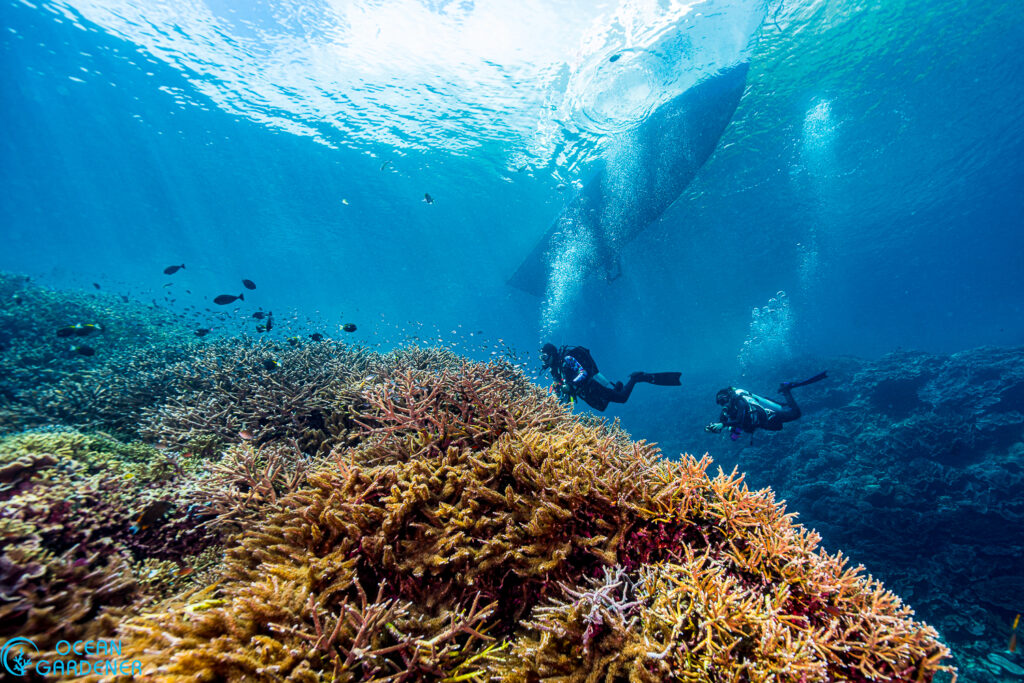
Banda Neira is more than just hammerhead sharks
After the Ocean Gardener team finished the 4-week Coral Reef restoration Course in Raja Ampat, Vincent and Jon flew to Ambon for a couple of days. After Banda Neira is one of the ten volcanic islands in the remote Banda Archipelago, located in the Maluku province of eastern Indonesia, situated in the Banda Sea.
It is a prime scuba destination due to its location within the Coral Triangle, the area with the highest marine biodiversity on Earth. The clear, pristine waters, often with excellent visibility, offer divers stunning and diverse underwater topography, including steep drop-offs, walls, and unique lava flows from the active volcano, Gunung Api. Marine life is incredibly rich, featuring thriving hard and soft coral gardens, encounters with large pelagic species like hammerhead sharks, manta rays, and tuna, as well as a huge variety of reef fish, sea snakes, and macro critters like the colorful mandarinfish. The remote location also means the reefs remain largely untouched and less crowded compared to other popular dive spots. short but meaningful meeting with Mareike, one of the Founders of Luminocean, we decided to sail to Banda Neira. Luminocean and Ocean Gardener have been collaborating on the Cosmarindo Project.
Luminocean sent one of its members to take our 4-week course in June this year in Bali. So we were curious to see what all the fuss was about. Banda Neira, located hundreds of kilometers southeast of Ambon, is surrounded by pristine coral reefs renowned for their hammerhead shark sightings. With this in mind, both Vincent and Jon went for a short 3-day trip to see for themselves.
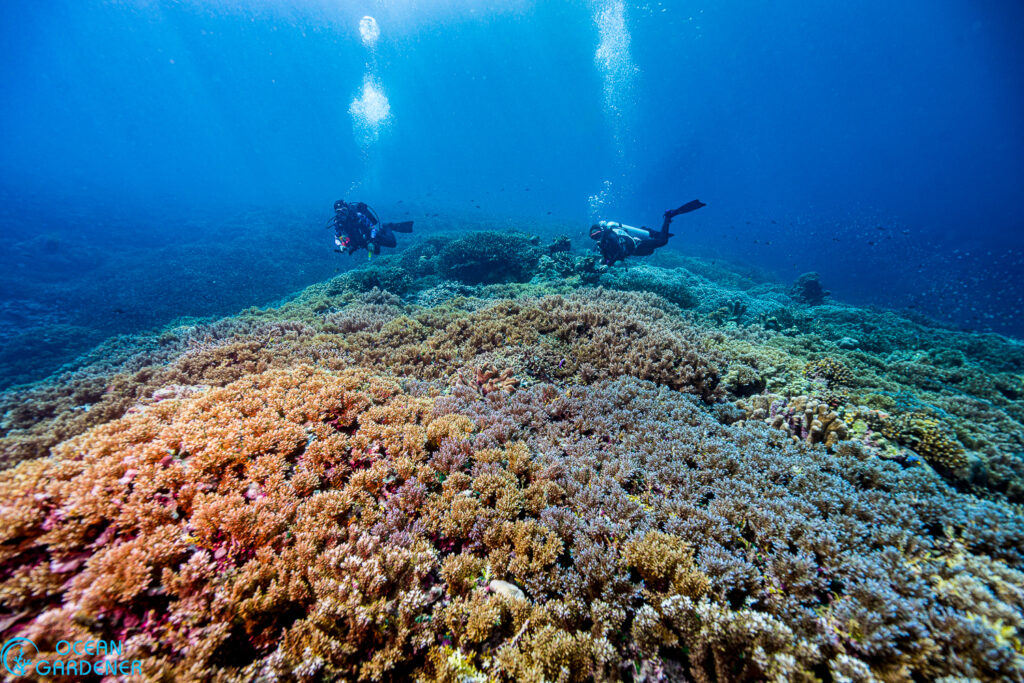

Lava Flow and its endless rolling hills of corals
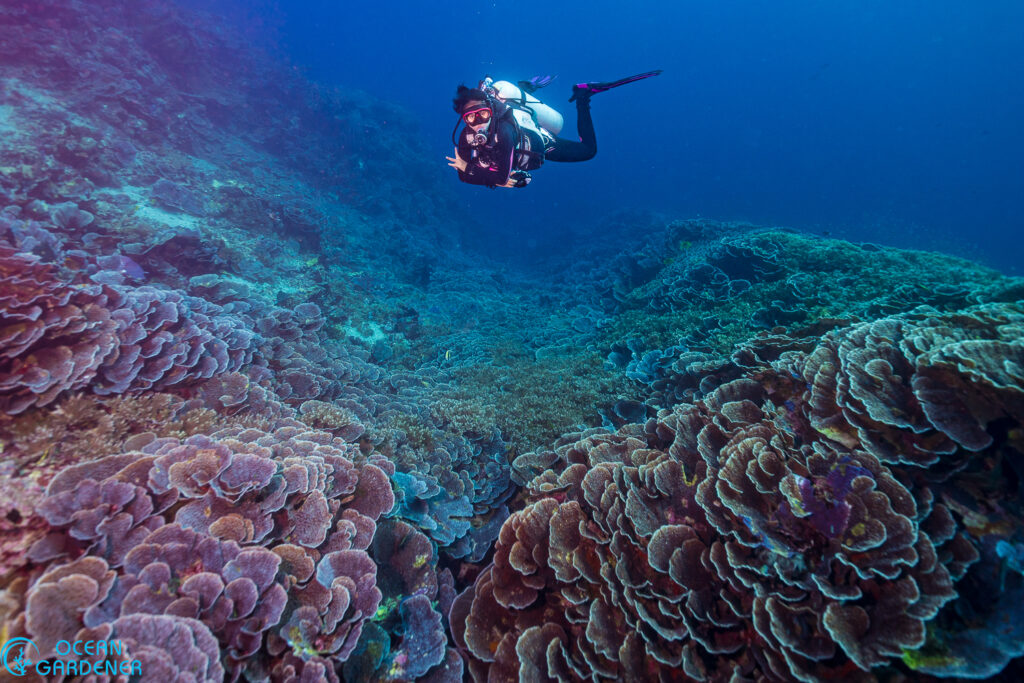
We arrived early in the morning in Banda Neira and went straight to Baba Lagoon, a homestay and scuba dive center that collaborates with Blue Motion and Luminocean. Here, they provided amazing scuba diving with an amazing team, together with their boats, Putih and Lucu. For the first two dives in Banda Neira, we were guided by Nabila, an Ocean Gardener Scholarship alumnus who finished her course last June in Bali with us. She is currently working with Luminocean.
Coral Reefs Reborn from Ashes
Lava flow is one of the most famous coral dive sites to explore here in Banda Neira. There was an eruption of Mount Banda in 1988, and it destroyed everything around, both above and under the water. The corals here only began to grow not more than 40 years ago, and the combination of the unique lava stone created from the eruption created a special ecosystem. We dove Lava Flow twice, both the north and south parts and we were stunned by the corals. It was amazing. We were left dumbfounded by the coral health and cover.
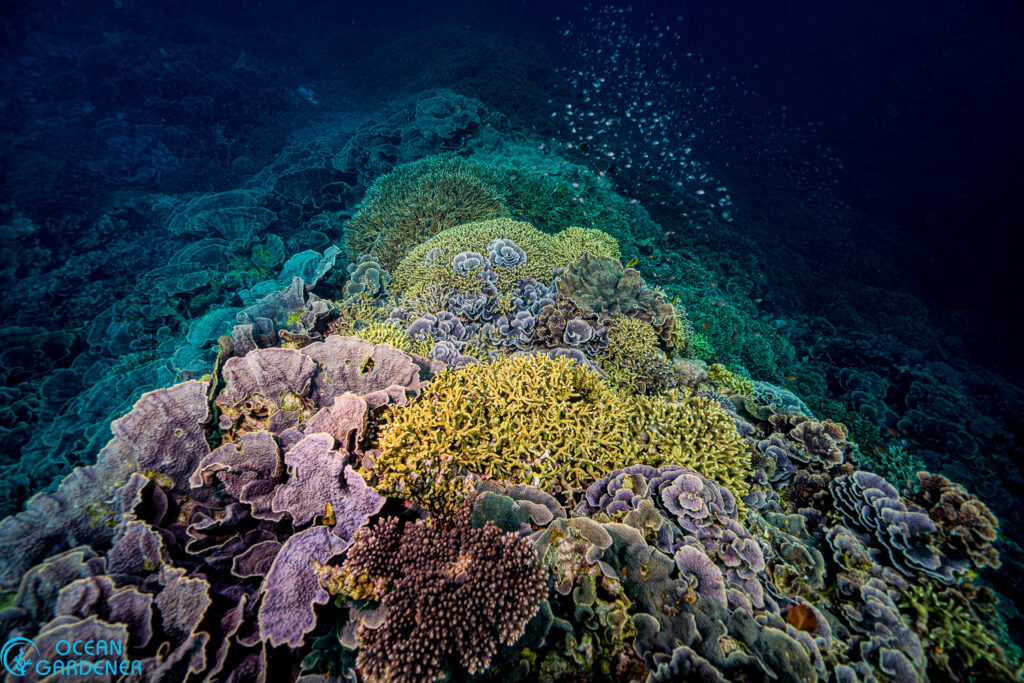
Because the reef was destroyed during the 1988 eruption of Gunung Api (Fire Mountain), they got reset, and a few species, early settlers, managed to take over the whole area. The diversity is not great, as it’s a young reef, and it will take quite a bit of time for other species to try to anchor themselves in this reef, with not much space left. It’s fascinating to realize this is when the predators we fight off are actually becoming important, by creating cracks in the framework of a few species, for other species to actually come and increase the diversity.
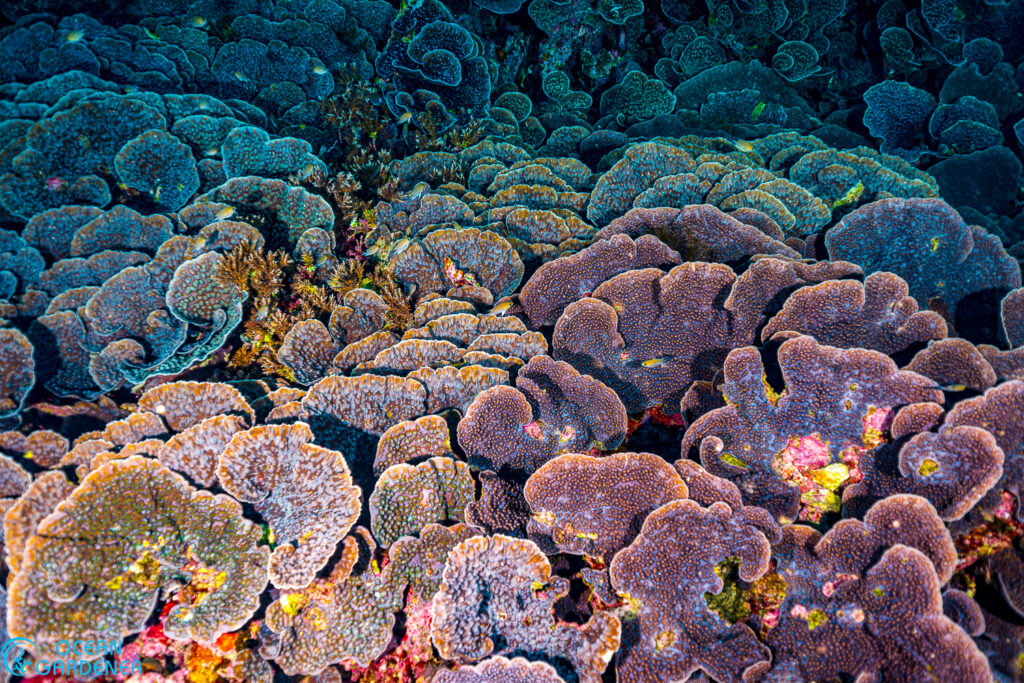
One interesting fact is that we were expecting to find a giant colony of corals. But we were mesmerized by the fact that it’s clear that different species and phenotypes are living together. It is pretty obvious with the Mycedium colonies. Maybe over the years, one particular phenotype will manage to overgrow and dominate all the other. The survival of the fittest in full mode!
Different Acropora species adapted to the different sections
On the north site, the reefs in the shallow area were dominated by Acropora microphthalma, and going deeper, it shifted to Acropora carduus and finally a mix of Mycedium robokaki and M. elephantotus. The reefs continued well passed 35 meters, and the condition of the reef was astonishing, with almost no bleaching found, and so little disease. That makes sense as the reef is quite remote, away from human stressors like pollution and mechanical damage from tourism.
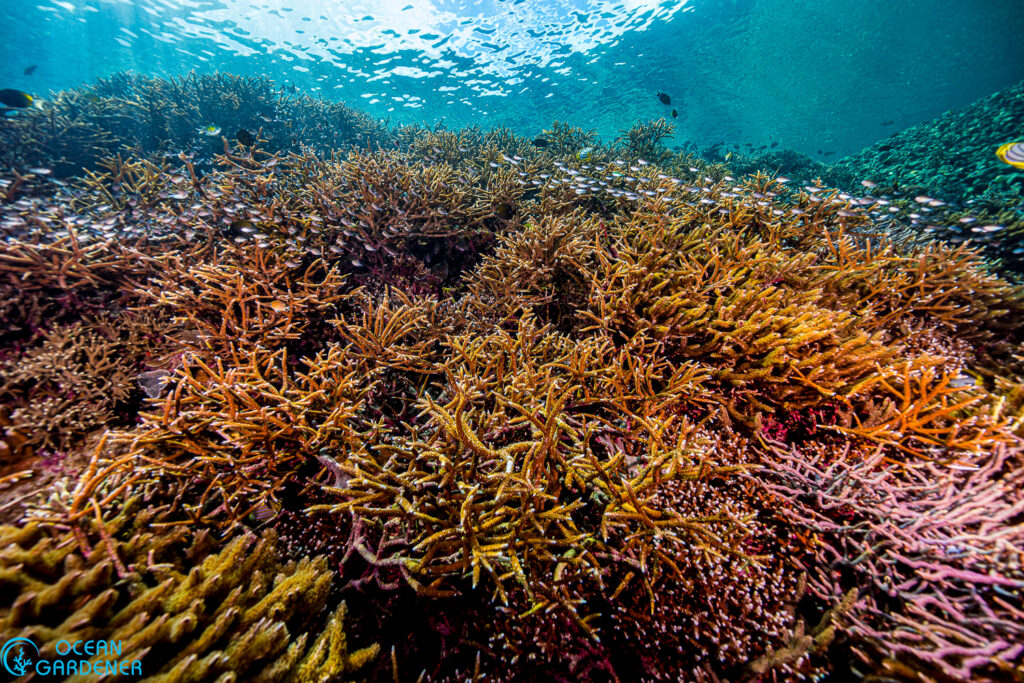
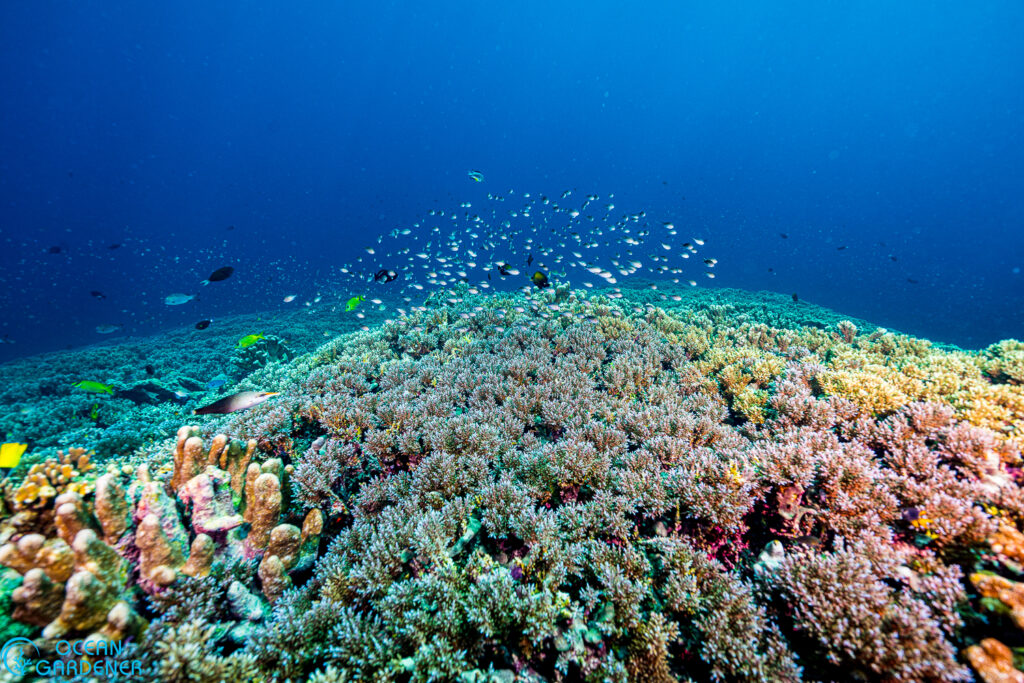
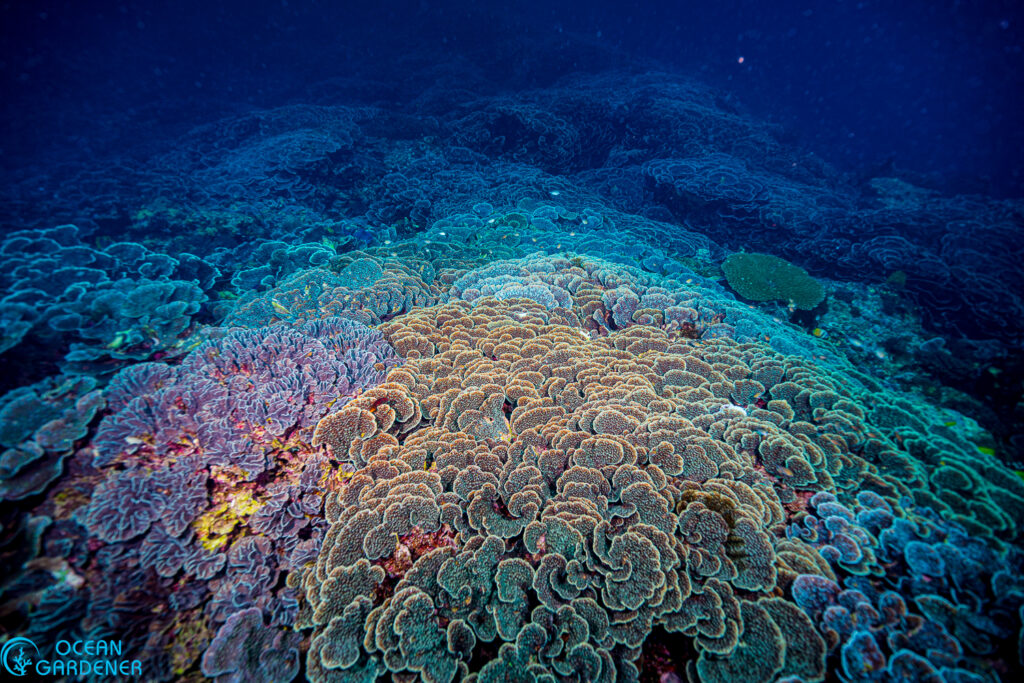
Fish-wise, the Luminocean team said that there has been an increase in fish biomass compared to 15-20 years ago. Although the biomass is quite small compared to the coral cover, it still shows such a healthy ecosystem with a lot of different kinds of unique fish, like the cryptic Golden Angel (Centropyge aurantia).
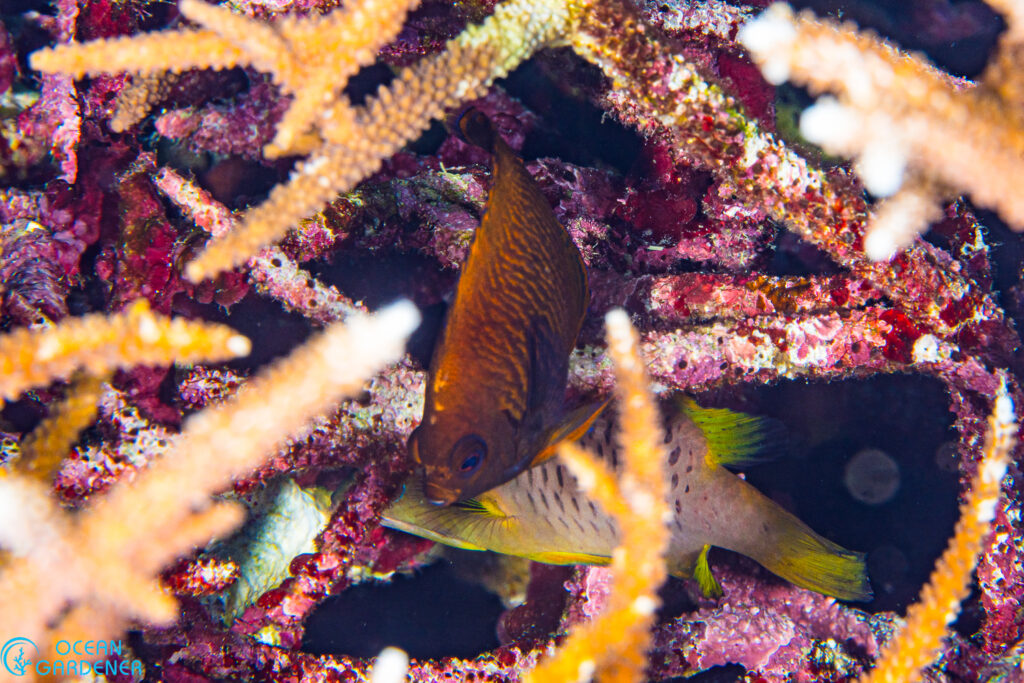
On the south side of Lava Flow, which is more protected than the already protected north side, the species shift began. From an Acropora-dominated reef, it shifts to a Porites-dominated reef, from the shallow to the deep, we found at least 4 different dominating species of Porites, such as the branching Porites clyindrica, the flexible Porites rus, and two massive Porites lobata and P. lutea.

The Luminocean team deployed cameras that they use for coral spawning monitoring, and they also installed some settlement plates to do research about coral larvae settlement. Both the cameras and plates were placed in various places along Lava Flow. This camera technique is a really good method of researching coral spawning because it can capture both videos and photos every six minutes. They usually leave the camera for two weeks, recover it, and analyse the images. From their result, they can figure out the exact time of spawning for that particular species, which will eventually allow them to collect spawns and work on their sexual reproduction.
Banda Naira and its possibilities of a huge Acropora diversity
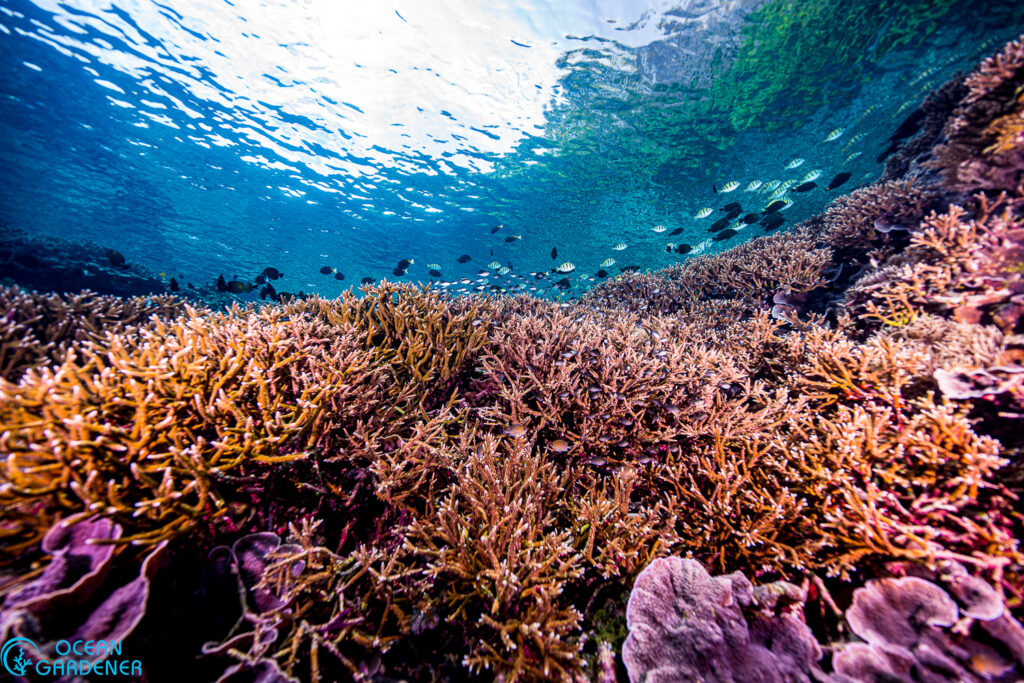
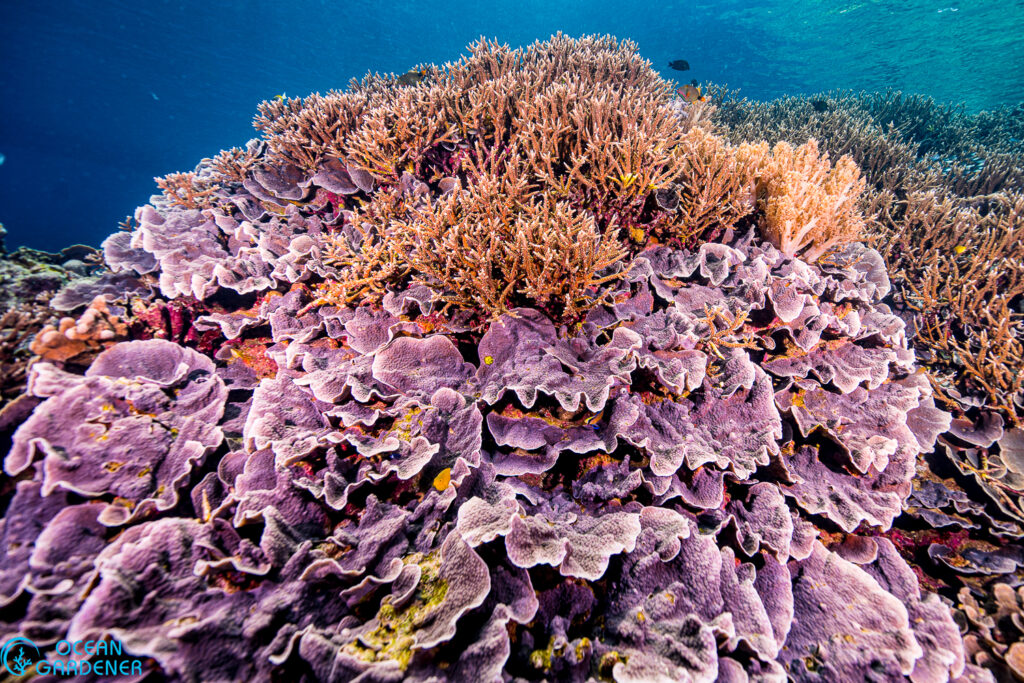
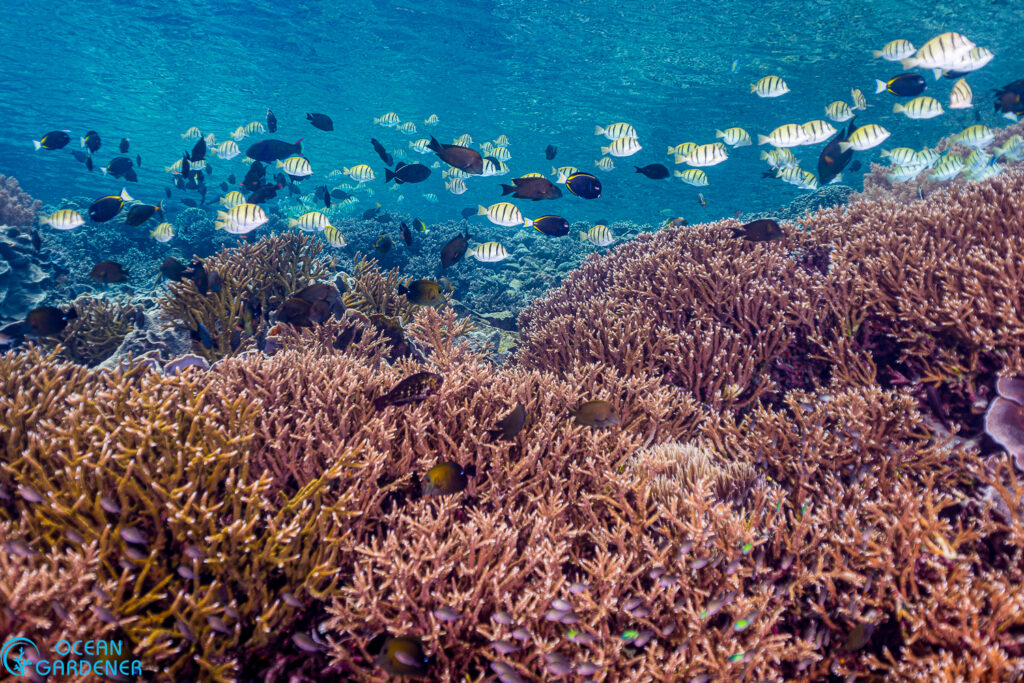
Although Vincent and Jon only stayed 3 days there, and mainly dived Lava Flow, Banda Neira really showed a great potential for Acropora diversity. And to support Luminocean in their research and conservation efforts, we will be running a unique Acropora ID course in Banda Neira from 16-27 December 2025. Reserve your spot if you wish to explore these amazing reefs and learn about the diversity of Acropora here.